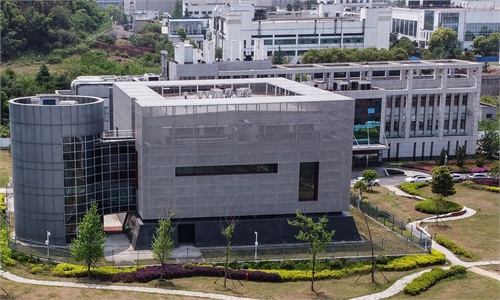Wuhan Institute of Virology lab director refutes WSJ report on sick staff, calling US intelligence doc 'a complete lie'

Wuhan Institute of Virology file photo:VCG
The so-called US intelligence report on sick staff at the Wuhan Institute of Virology is an outright lie that came from nowhere, Yuan Zhiming, director of the institute's Wuhan National Biosafety Laboratory, told the Global Times on Monday, refuting the latest report from the Wall Street Journal about an undisclosed US intelligence report indicating three researchers from the lab became sick in November 2019.
"I've read it, it's a complete lie," Yuan said when he was asked by the Global Times on Monday morning about the WSJ story, which was published on Sunday titled "Intelligence on Sick Staff at Wuhan Lab Fuels Debate on COVID-19 Origin".
The story, citing an unpublished report that was issued during the final days of the Trump administration, said several researchers at the lab became sick in the autumn of 2019 with symptoms consistent with both COVID-19 and common seasonal illnesses.
"Those claims are groundless. The lab has not been aware of this situation [sick researchers in autumn 2019], and I don't even know where such information came from," the Chinese researcher told the Global Times.
WSJ published the story on the eve of the World Health Assembly, which is expected to discuss the next phase of the research into COVID-19's origins, the US media report said.
US politicians and media outlets have again been pursuing the lab leak theory as the origin of COVID-19, despite scientists from the WHO-China joint study team concluding in a full report after field study in Wuhan that a lab leak is extremely unlikely.
The lab leak theory was a baseless argument from the beginning, which is the consensus of global scientists, according to experts from the joint team.
The report, generated in March after WHO experts visited Wuhan, suggested COVID-19 came about from transmissions between animals and humans, and transmissions through frozen food.


